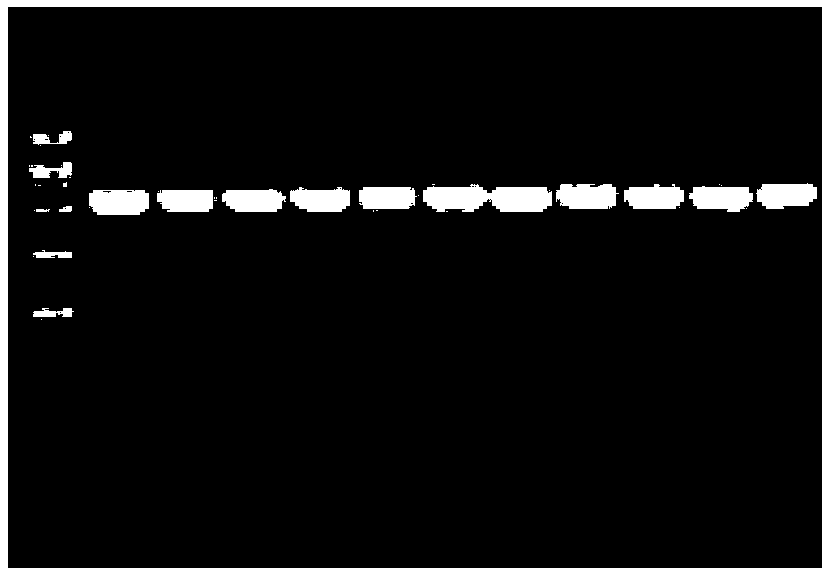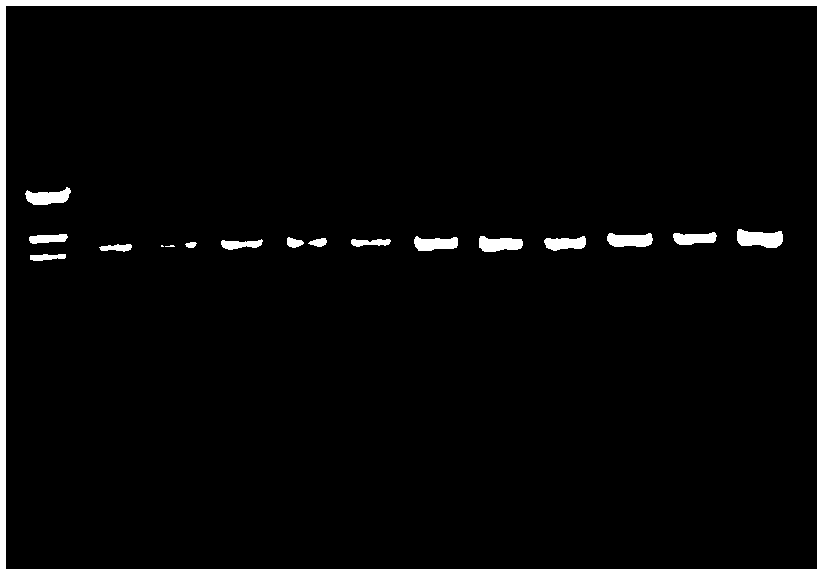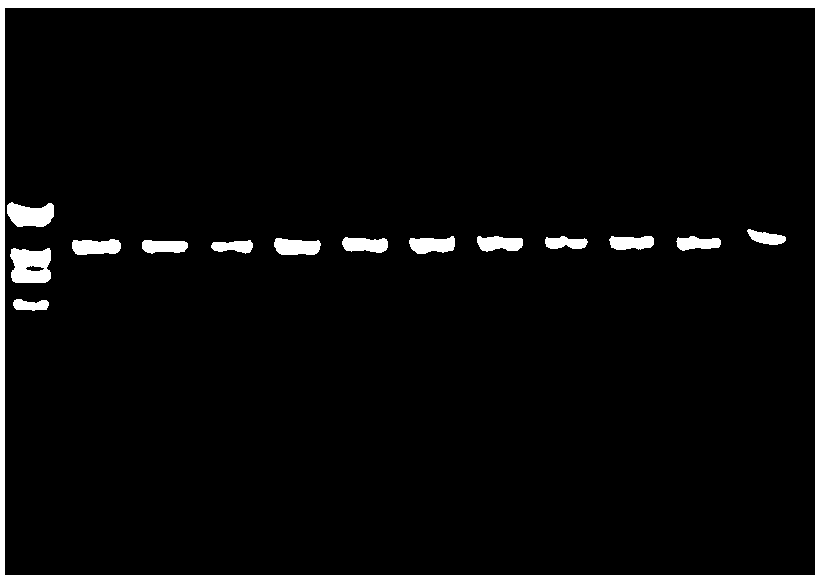Rapid screening method for weakly post-acidified Lactobacillus bulgaricus, combined sequence for realizing said method and construction method thereof
A technology for constructing methods and screening methods, which is applied in the field of genetic engineering, can solve problems such as error-prone, time-consuming and labor-intensive, hidden dangers of genetic stability and expression specificity of mutation breeding bacteria, and achieve low-cost, batch screening operations , the effect of high sensitivity
- Summary
- Abstract
- Description
- Claims
- Application Information
AI Technical Summary
Problems solved by technology
Method used
Image
Examples
Embodiment 1
[0044] Activation, cultivation and identification of embodiment 1 bacterial strain
[0045] Lactobacillus bulgaricus, which had been screened by weak post-acidification through other existing technologies in the lactic acid bacteria resource bank of Inner Mongolia Agricultural University, was used as the analysis object, and a total of 13 strains were collected. The strain information is shown in Table 2:
[0046] Table 2 The isolation source and post-acidification degree of 13 strains of Lactobacillus bulgaricus
[0047]
[0048] Do the following for each sample:
[0049] Bacterial strain activation: put the freeze-dried bacterial powder stored in the ampoule tube into the MRS medium for activation and rejuvenation (37°C, 24h), and microscopically examine the smear of the bacterial liquid, and the microscopic examination result is a Gram-positive pure culture The species were continued to be subcultured to the third generation.
[0050] Use liquid nitrogen freeze-thaw-C...
Embodiment 2
[0051] The construction of embodiment 2 joint sequence
[0052] 2.1 Design primers
[0053] Using the published Lactobacillus bulgaricus ND02 (Genbank number CP002341) as a template, select key enzymes involved in acid production and post-acidification (such as β-galactosidase, phosphofructokinase, lactose dehydrogenase, H + -ATPase and F 0 f 1 -ATPase) genes LdhL, LacZ, Pfk, ATPsA and uncC as targets. According to the existing research, these key genes are significantly correlated with the acid production ability of Lactobacillus bulgaricus. Primer Premier 6.0 software was used to design specific amplification primers, and each primer was artificially synthesized as shown in Table 3 above.
[0054] table 3
[0055]
[0056] 2.2 Gene amplification
[0057] The template DNA was amplified by PCR using the primers in Table 1 to obtain five gene fragments of the 13 bacterial strains in Table 2, respectively.
[0058] Amplification system: template DNA 50ng, 10×PCR buffer...
Embodiment 3
[0065] Embodiment 3 builds developmental tree
[0066] Adopt MEGA6.0 software package to analyze joint sequence, through Clustal W comparison, the sequence of 13 bacterial strains in embodiment 2 and the joint sequence of SEQ No.1 (corresponding Lactobacillus bulgaricus ND02) are carried out pairwise comparison, calculate sequence A distance matrix was constructed to reflect the genetic relationship between the sequences.
[0067] Then construct the phylogenetic tree by the maximum likelihood method (Maximum likelihood), such as Figure 4 shown.
[0068] Depend on figure 1 It can be seen that, with Lactobacillus bulgaricus ND02 as a standard, the phylogenetic tree constructed based on the joint gene sequence of LacZ-LdhL-Pfk can be seen: the phylogenetic tree constructed by 13 strains of Lactobacillus bulgaricus mainly consists of two branches, one of which is ND02, IMAU20298, IMAU20282, IMAU20302, IMAU20136, IMAU20331, IMAU20790, IMAU20769, IMAU20240, IMAU20401 and other s...
PUM
 Login to View More
Login to View More Abstract
Description
Claims
Application Information
 Login to View More
Login to View More - R&D
- Intellectual Property
- Life Sciences
- Materials
- Tech Scout
- Unparalleled Data Quality
- Higher Quality Content
- 60% Fewer Hallucinations
Browse by: Latest US Patents, China's latest patents, Technical Efficacy Thesaurus, Application Domain, Technology Topic, Popular Technical Reports.
© 2025 PatSnap. All rights reserved.Legal|Privacy policy|Modern Slavery Act Transparency Statement|Sitemap|About US| Contact US: help@patsnap.com



